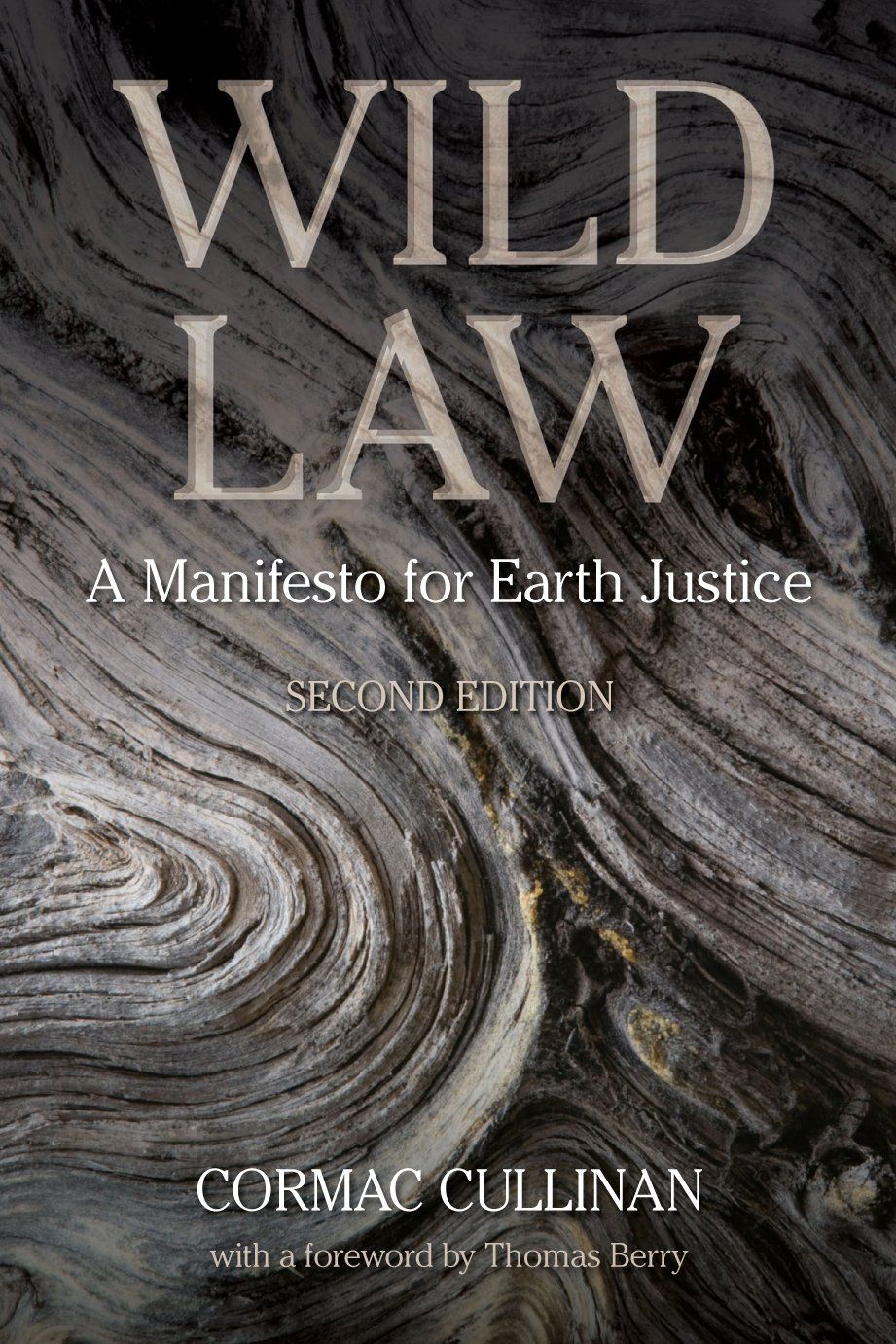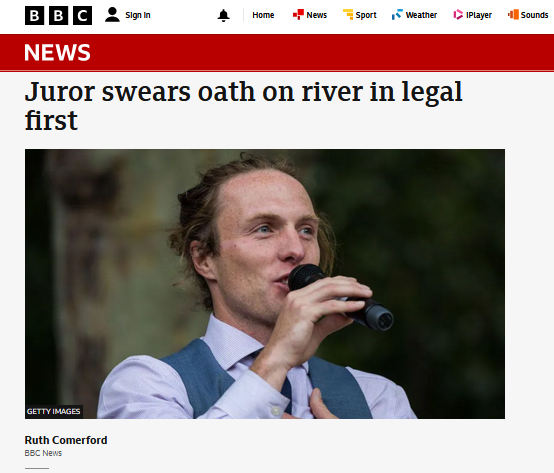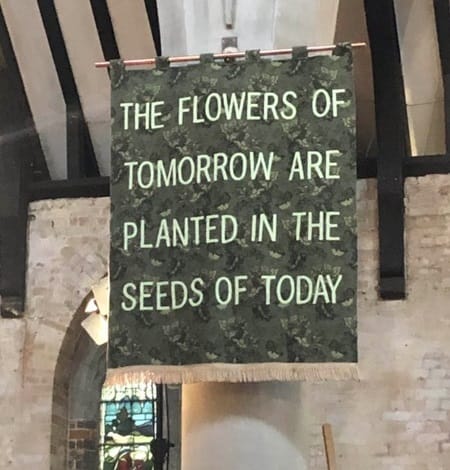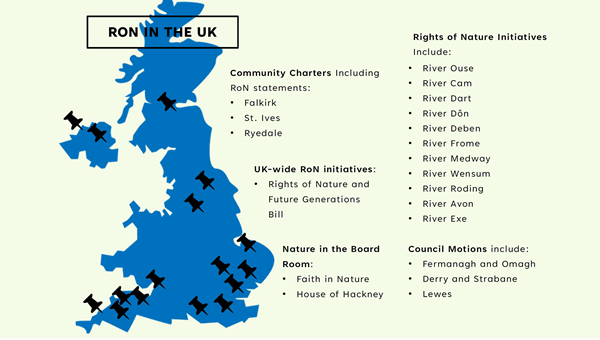Being for Nature: Introducing Interconnected Law

By Alex May
The previous blog posts in this series looked at what it means to be ‘for nature’ and how we conceptualise society, covering social ecology and relational/holistic models of society and nature. Now, we in the final post in the series, we look at what this means for law.
Beyond Earth Jurisprudence
I came across Earth Jurisprudence right at the end of my undergraduate degree, and it set me on the journey I’m now on. However, I have come to the conclusion that it is only partial and we need to expand our thinking to a more holistic approach to law. Many readers will already be familiar with Earth Jurisprudence – which much of Lawyers for Nature’s work is based on. If you want to read beyond the one-paragraph summary below, you can check out this summary on the Gaia Foundation’s website, a longer piece I wrote on my website or, of course, Cormac Cullinan’s book Wild Law, (which is a great read).

Earth Jurisprudence shows that law is part of the destructive relationships which humans have with the rest of nature. Our legal systems designate land, animals, ecosystems etc. as mere objects which humans are empowered to destroy and plunder, codifying our conceptual human-nature division. Freedom is the freedom to act is without countervailing responsibilities. Humans gain freedom to do as we wish and take, but without a reciprocal care relation to the wider natural world (or to fellow humans). Corporations are free to profit, but without any limitation that this is socially beneficial or ecologically beneficial. It is all out of balance, not recognising that freedom is something we have to create together.
Earth Jurisprudence is only partial because it looks only at the relationships with the rest of Nature, without also looking at social relationships. As was discussed in the first blog post, we must think socially as well as ecologically. These are inseparable, with ecologically destruction intertwined with social relations and driven by social domination.

For example, to critique the way that it is legally normal for corporations to cause severe ecological harm, we must also recognise the links with the way that it is normal for them to cause social harm.* Just as workers can be exploited and controlled, and corporate activity can have a socially detrimental effect, so too can the natural world. Often, it is the same action which leads to both harms: a chemical spill will both harm people who live nearby and cause wider ecological harm.
*These were perhaps justified by the assumption that anything which is profitable, or which people pay for, is socially beneficial, and that regulation can limit harmful corporate activity, which has been proven false.
Just as harmonious relationships with the rest of Nature require harmonious social relations, so too must our approach to law cover both ecological and social relations. A critique of law’s role in ecological destruction must also include a critique of law’s role in social domination, and the social forces which drive ecological destruction, for it to provide a full picture and be able to transform society away from destruction and domination.

Interconnected Law
We need both ecological and social harmony to move us off the path of ecological destruction. I think we can frame law’s role, expanding on how it is cast in Earth Jurisprudence, to be that Law’s purpose should be to improve the web of relations we live in so that they are more just, harmonious and empowering as part of a Whole Earth Community.
I have termed this approach to law ‘Interconnected Law’, as I think ‘interconnection’ is the core commonality of ecological critique of Earth Jurisprudence, the relational approach to society, and social ecology. It also includes both the critique of the current way and the signpost for the direction we go in next.
Just as Earth Jurisprudence diagnoses various aspects of our legal systems which are part of ecological destruction, Interconnected Law recognises various aspects of our legal systems which are part of social oppression. We can see this both at the conceptual level and in particular legal domains or segments of society.
At the conceptual level, the argument is that our current approach to law is flawed, in terms of how most people think about law, how law understands itself, and how our legal system is designed. Our current law is foundationally flawed: as well as the separation between humans and nature as discussed in Earth Jurisprudence, it is based on an individualistic approach to society.

Relational Approach to Law
Society is a web of relationships. As set out in the previous blog post in this series, and law should be based on this. Instead of governing a collection of individuals, trying to secure individual rights and individualised freedom, law should instead aim to foster just relationships which will result in the outcomes we want individuals to have.
For example, if we want freedom, instead of just creating individual legal rights, legal intervention should be intentionally trying to (re)structure relationships to be ones in which people are more free. Individual rights would still have a role; it is more about being conscious and purposive of the relational structures and dynamics which rights bring about.
In terms of criminal justice, for example, instead of simply punishing people who do bad things, a more holistic approach looks at the socio-economic (and if we expand to include ecocide, also ecological!) drivers of crime, shifting to public safety and harmonious relationships instead of dealing with bad apples.
This relational approach isn’t an argument about what law should do: it’s a description of what law already does. Law is, by its nature, about interactions between people, and so it is inherently relational. In all sorts of different ways, law is already influencing and structuring social relationships. Sometimes it does this positively, such as securing rights; sometimes it does this negatively, creating and perpetuating power imbalances or situations in which it is easy to exploit people.

Let’s look at a second legal domain: employment law. This is, by its nature, about the relationship between employer and employee. Current employment law includes basic rights, such as non-discrimination, sick pay, minimum annual leave and a minimum wage. At the same time, it still sets up a fundamentally unequal power relationship in which the employer is free to tell employees what to do, and employees have little control over the work they do, the amount of money they receive, or even on a day-to-day basis whether they should be treated fairly.
There are basic union rights, giving the possibility of employees to work together to try and correct the power imbalance, but also restrictions on union activity, making it much harder than it used to be for unions to organise. Without going into much detail, I hope that shows how law has a significant influence on relationships in society.
Conceptual Framework
The aim of Interconnected Law is not to provide a blueprint for our entire legal system, but to provide a conceptual framework which can be used for thinking about what a just legal system should look like and thinking about what law should be in various legal domains.
The same relational analysis done very briefly about employment relations could be undertaken for any area of human activity. The first half is to analyse the current situation: mapping out the relationships and considering in which ways they are just and unjust; then, looking at what role law is playing in this, whether actively or in its absence. The second half is to think about what just and harmonious social relations would look like, how we might get there, and what role does law have in this. It is not necessary to come up with answers and a blueprint, but to point in the direction with an idea about the big picture and some solid steps to get towards it. Transforming society is going to be an ongoing process!

These are socio-political questions, not only legal ones. Law is a means towards certain goals, not the end in itself, with the role of social transforming towards more just and harmonious relations. Usually, much of this will not be about law but about changing cultural norms, power imbalances and people’s minds. However, in socio-political change, law is an important part of the puzzle which is often missed.
The Future of Change
The core argument of Interconnected Law, much like Earth Jurisprudence, is that our legal systems must themselves change as part of the transition to the just and harmonious society which we need.
Law must recognise that humans are part of the rest of nature and part of society, living in a dense socio-ecological network of relationships. and law has a significant role in transforming our society towards social and ecological harmony.
This would also be a continued change to the nature of law, away from command-and-control. In one job I have I work with children, and I see the difference between disciplining children (whether shouting or punishing them) and working with them in a nurturing way. This would be a gross simplification of law, which already works in a variety of ways, but I do think that the way the legal systems operates would change significantly in this new model.
Hopefully this blog post has given an overview of how to think about law, and how our legal systems should be different, as part of this. You can read more about Interconnected Law at www.interconnectedlaw.com, follow the project on Twitter @InterconLaw, or contact me at alex@alexmay.co.uk.
Subscribe to Lawyers for Nature & Join our Community
If you are on the website, enjoyed this blog and are yet to subscribe to the Lawyers for Nature newsletter, you can click the button at the bottom right hand corner of this page, or simply click here. You can also use our Contact Page if you would like to reach out directly, or simply join our Community Discord Server.
We look forward to working with you.




